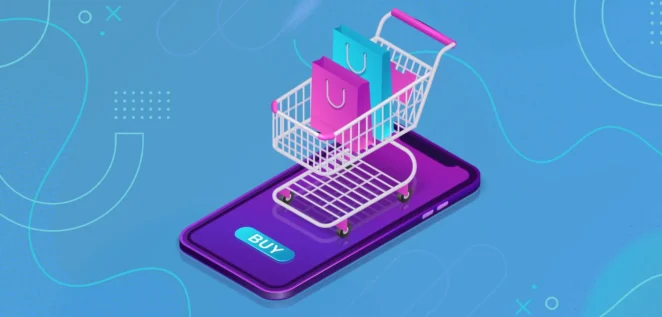In recent years, e-commerce has become critical for businesses looking to expand their reach and drive revenue. However, with great potential for success comes great risk, and one of the most significant hazards in online commerce is the tendency to overcomplicate. Too often, companies add unnecessary features and complexity to their online stores to enhance the customer experience, only to overwhelm and confuse them.
In this article, we’ll explore the perils of overcomplication in e-commerce, identifying the common pitfalls that can hinder success and providing actionable strategies for streamlining your online enterprise approach.
The Risks of Overcomplicating E-Commerce
The risks of overcomplicating e-commerce are numerous and significant, potentially impacting customer experience, sales, and website performance. When you, as a business, add too many features and functions to your online store, you can overwhelm customers and create confusion, ultimately leading to abandoned shopping carts and lost sales.
Moreover, overcomplication can negatively impact website speed and performance, frustrating buyers and reducing their likelihood of returning to the site. This can be especially detrimental in the current era of instant gratification, where slow-loading pages and lagging performance can turn off potential shoppers.
Perhaps most critically, cluttering your online store with too many features or design elements can make it difficult for purchasers to find what they need and complete their purchases promptly. That’s why being smart and strategic is of utmost importance. For example, you can double the effect of visuals by making them more appealing and resonating. Instead of polluting your branded page with various multimedia elements (thus making it significantly more complicated), combine them using VistaCreate. With VistaCreate, you can easily add audio to video to engage visitors more with your page’s content.
Common Pitfalls in E-Commerce Strategy

When attempting to optimize your e-commerce strategy, your brand can fall into several common pitfalls that prevent success. One such pitfall is an overemphasis on design at the expense of the user experience. While visually appealing websites can certainly attract visitors, it’s crucial to prioritize ease of use and intuitive navigation to ensure a positive customer journey.
Another common mistake is failing to streamline checkout processes. Lengthy or complicated CPs can be a significant turnoff for people, leading to lost sales.
Finally, clear messaging is essential to any successful e-commerce tactic. Confusing or misleading descriptions can leave shoppers feeling frustrated and uncertain, causing them to abandon the site and seek out competitors.
Navigating E-Commerce Pitfalls
Navigating the pitfalls of e-commerce can be challenging, but you can follow several best practices to simplify your e-commerce strategies and optimize your online store. These practices include:
Prioritizing User Experience
The user experience should be at the forefront of any e-commerce strategy. It’s imperative that your brand makes sure all pages load quickly, navigation is intuitive, and clients have access to all the information they need to make informed decisions. One way to ensure a positive UX is by implementing responsive web design, which allows your website to adjust to any screen size and device. This is especially important as more and more people are accessing e-commerce sites from their mobile devices.
Streamlining Checkout Processes
As mentioned, a complicated checkout process is one of the businesses’ biggest mistakes. Buyers should be able to complete their purchases quickly and easily without encountering any unnecessary steps. This means eliminating unnecessary form fields, offering secure payment systems, and providing clear instructions throughout checkout. Regularly testing the checkout process will ensure everything is running smoothly.
Providing Clear and Concise Messaging

People should have access to clear and concise messaging throughout the website to avoid confusion and increase their satisfaction. This includes product descriptions, shipping information, return policies, and other relevant information users need. Additionally, consider implementing chatbots or live chat support to provide immediate assistance to shoppers with questions or concerns.
Leveraging Social Media Channels
Social media is a time-and-trusted way to reach target customers and drive traffic to your business page. Identify which social media platforms your targets use most frequently and create engaging content that resonates with them. Also, ensure to maintain this marketing pipeline and interact with customers and respond promptly to any questions or feedback.
Optimizing Search Engine Results
Search engine optimization (SEO) is critical to any e-commerce-based enterprise. Optimizing your website for relevant keywords can improve your search engine rankings and funnel more traffic to your page. This can be achieved through on-page optimization, such as optimizing meta tags and descriptions, and off-page optimization, such as building high-quality backlinks.
Setting Up Email Campaigns
Email marketing is another top-notch way to stay top-of-mind with clients and multiply sales. Set up email campaigns to promote new products, deals, and other special offers. Besides, segment your email list based on client behavior and interests to ensure your messages are relevant and targeted.
Case Studies

Let’s dive deeper into some successful e-commerce strategies implemented by Zappos and Glossier, two companies that have succeeded in online retail.
Zappos, an online retailer known for its wide selection of shoes and accessories, has become a household name in e-commerce. However, its unwavering focus on customer satisfaction sets Zappos apart from its competitors. One of the keys to their success is a simple checkout process, which allows people to quickly and easily complete their purchases. They also offer clear and concise product descriptions, making it easy for users to find the desired items. Zappos provides a user-friendly site that is easy to navigate, with intuitive search functions and helpful filtering options.
Another successful e-commerce business is Glossier, an online beauty retailer that has built a strong following by focusing on customer experience. Glossier offers helpful tutorials and product reviews, giving people the information they need to make an informed decision. Their website is straightforward, with clean visuals and clear descriptions. Likewise, Glossier offers a simple and secure checkout process, allowing anyone to complete their purchases swiftly. Glossier has established itself as a leading player in the online beauty industry by prioritizing usability and customer satisfaction.
Bottom Line
With all that said, it boils down to this: the success of your e-commerce strategy hinges on your ability to simplify and optimize the customer experience. By avoiding the common pitfalls of over-complication, streamlining checkout processes, and providing clear and concise messaging, you can increase client satisfaction and boost sales for your online enterprise. With these tips in mind, you can navigate the perils of overcomplication and steer your online brand toward success.




